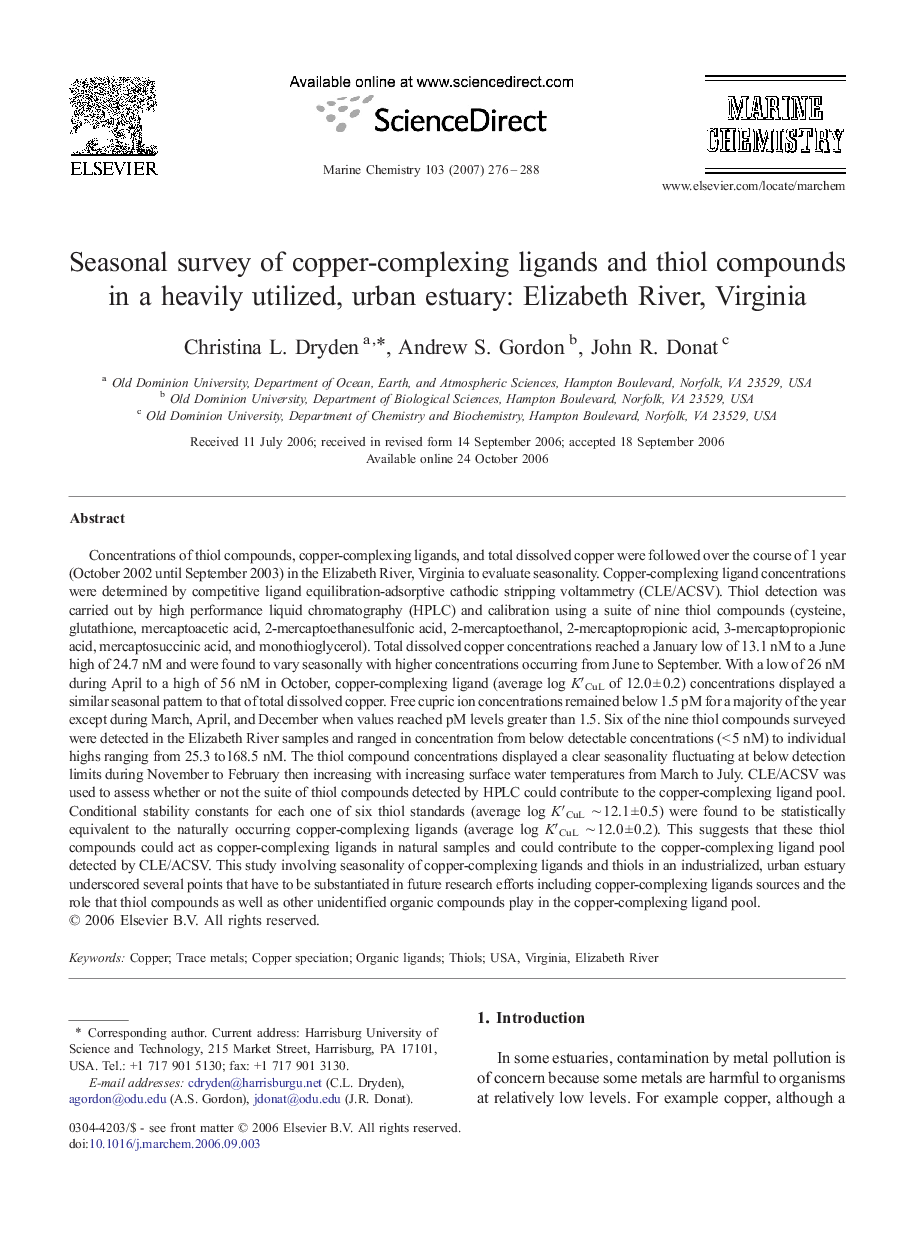| کد مقاله | کد نشریه | سال انتشار | مقاله انگلیسی | نسخه تمام متن |
|---|---|---|---|---|
| 1262058 | 1496732 | 2007 | 13 صفحه PDF | دانلود رایگان |

Concentrations of thiol compounds, copper-complexing ligands, and total dissolved copper were followed over the course of 1 year (October 2002 until September 2003) in the Elizabeth River, Virginia to evaluate seasonality. Copper-complexing ligand concentrations were determined by competitive ligand equilibration-adsorptive cathodic stripping voltammetry (CLE/ACSV). Thiol detection was carried out by high performance liquid chromatography (HPLC) and calibration using a suite of nine thiol compounds (cysteine, glutathione, mercaptoacetic acid, 2-mercaptoethanesulfonic acid, 2-mercaptoethanol, 2-mercaptopropionic acid, 3-mercaptopropionic acid, mercaptosuccinic acid, and monothioglycerol). Total dissolved copper concentrations reached a January low of 13.1 nM to a June high of 24.7 nM and were found to vary seasonally with higher concentrations occurring from June to September. With a low of 26 nM during April to a high of 56 nM in October, copper-complexing ligand (average log K′CuL of 12.0 ± 0.2) concentrations displayed a similar seasonal pattern to that of total dissolved copper. Free cupric ion concentrations remained below 1.5 pM for a majority of the year except during March, April, and December when values reached pM levels greater than 1.5. Six of the nine thiol compounds surveyed were detected in the Elizabeth River samples and ranged in concentration from below detectable concentrations (< 5 nM) to individual highs ranging from 25.3 to168.5 nM. The thiol compound concentrations displayed a clear seasonality fluctuating at below detection limits during November to February then increasing with increasing surface water temperatures from March to July. CLE/ACSV was used to assess whether or not the suite of thiol compounds detected by HPLC could contribute to the copper-complexing ligand pool. Conditional stability constants for each one of six thiol standards (average log K′CuL ∼ 12.1 ± 0.5) were found to be statistically equivalent to the naturally occurring copper-complexing ligands (average log K′CuL ∼ 12.0 ± 0.2). This suggests that these thiol compounds could act as copper-complexing ligands in natural samples and could contribute to the copper-complexing ligand pool detected by CLE/ACSV. This study involving seasonality of copper-complexing ligands and thiols in an industrialized, urban estuary underscored several points that have to be substantiated in future research efforts including copper-complexing ligands sources and the role that thiol compounds as well as other unidentified organic compounds play in the copper-complexing ligand pool.
Journal: Marine Chemistry - Volume 103, Issues 3–4, 16 January 2007, Pages 276–288